–
This piece was written by Rachael, HES Masonry Trainee at Lincoln Cathedral from September 2018 – 2019
–
Ever wondered what a stonemason gets up to during the working week? We put the question to Rachael, who is one of our masonry trainees at Lincoln Cathedral and this is what she had to share….
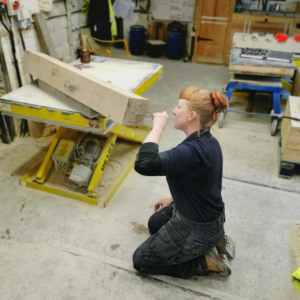
“I’ve been training at Lincoln Cathedral for a little over a year and a half now and I’m still just as excited as when I started! The work I get to do each week is so varied, ranging from fixing, repointing, conservation cleaning and getting to harness up and do exciting hoisting as well as working stone in the workshop. I get to see so many parts of the cathedral that the general public doesn’t get to see, and do so many odd jobs in between!
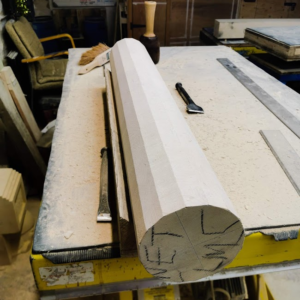
A couple of months ago I was lucky enough to be able to work a couple of columns to replace some damaged ones on the northeast transept, and I’d like to share the process with you all.
To start with the stone arrives from the quarry in pre-cut blocks. Each one has a code written on it that matches a job card and template, which details all the information I need to work the stone. So once the stone is in the workshop on my banker, I can start marking it up.
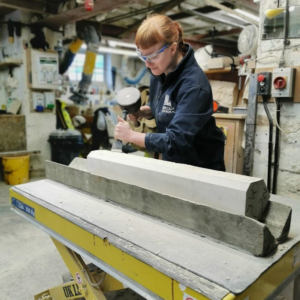
As the stone I’m working on is a column, I don’t need to apply a template; the only information I need is the radius of the column and I can mark that directly onto the stone with compasses. Once the circle is marked on each end and as the stone is square I know both ends line up, I can now start working the stone.
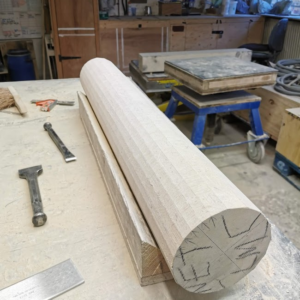
A column is worked in a series of chamfers (which is a technical word for a cut away in a right-angled edge or corner) to make a symmetrical sloping edge that decreases in size as I work around the stone. The column itself, like most masonry mouldings, is just a big flat surface which I arrive at by making lots of other flat surfaces. I’m using a wooden mallet made from lead wood and my tungsten tipped chisels. As I work around the stone creating smaller and smaller flat surfaces I can see the column slowly coming to life. Until I finally reach the point where I can’t do any more chamfers and all that is left is to carefully and by eye, take the final ridges out.
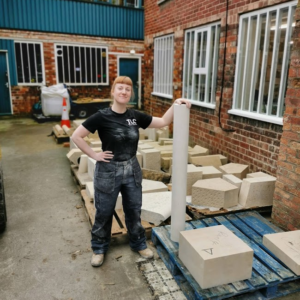 Once I’ve done this and my column is finally round and perfectly straight, I can go over it with a fine claw chisel to give the mottled tooled effect that the other stones on the building have. The final stage is drilling two holes in the top and bottom where metal dowels will be inserted for fixing on the building, and my banker mark (sometimes called a mason’s mark) is cut into the top of the stone. This identifies which mason completed the work.
Once I’ve done this and my column is finally round and perfectly straight, I can go over it with a fine claw chisel to give the mottled tooled effect that the other stones on the building have. The final stage is drilling two holes in the top and bottom where metal dowels will be inserted for fixing on the building, and my banker mark (sometimes called a mason’s mark) is cut into the top of the stone. This identifies which mason completed the work.
And voila! One column, ready to be fixed to the building. This took me about a week to complete and it’s such a huge sense of achievement knowing that I made something that will be on such an amazing building for 100s of years!

